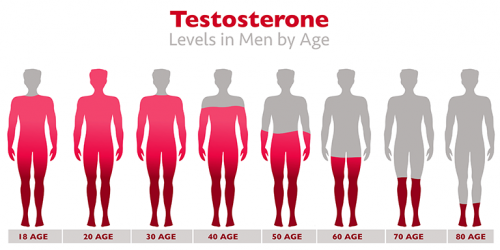
Over 150 million men worldwide were estimated to have been affected by erectile dysfunction in 1995, and this is projected to rise to 320 million by 2025.
Erectile dysfunction (ED) is becoming a common health problem affecting approximately 15% of men each year. Over 150 million men worldwide were estimated to have been affected by erectile dysfunction in 1995, and this is projected to rise to 320 million by 2025.
A 2020 study done in Johor, Malaysia showed an overall prevalence of self-reported erectile dysfunction at a staggering 81.5%. Another study in 2019 showed an ED prevalence of 77.8% amongst men in rural Peninsula Malaysia. Back in 2011, published data showed the prevalence of ED to be only 69.5% among Malaysian men.
Relatively, ED has been a problem for Malaysian men for a significant time and is getting worse in terms of how many people it affects. The negative effects of ED are also more prominent in this day and age.
We had the opportunity to have a discussion with Dr Kaarthig Ganesamoorthy from dtap Clinic with regard to this topic.

Dr Kaarthig Ganesamoorthy, dtap Clinic.
What is Erectile Dysfunction (ED)?
ED is the persistent inability to achieve or maintain a penile erection sufficient for satisfactory sexual performance. We typically grade this on a scale of 0 to 5 via the EHS (Erection Hardness Scale) where at level 5, the erection is a good quality erection whereas, at level 3, it is erect but not enough for penetration. At level 4, it is erect enough for penetration, but not as strong as a level 5 erection. Level 0 means no tumelescence at all.
There has been a significant negative impact on the quality of life of the affected individuals and their partners with the increasing prevalence of ED.
Causes of ED?
This is divided into four main categories. Blood flow issues – the most common cause and seen in younger population these days. The factors include unhealthy diet, poor cardiovascular strength and activity, increasing waist circumference and so on.
Penile blood flow is via an existing relatively small blood vessels. With constriction or external compression of the blood vessel, there is less nutrition to the penile muscles resulting in a lesser quality erection.
The second cause is a hormonal imbalance. With aging, poor diet or lifestyle, or systemic infections like autoimmune conditions or cancers can result in an abnormally low testosterone value or inappropriately high female hormone profile. Every person has both male and female hormones in the body. In the male, the dominant hormone profile is the testosterone variants and, in a lady, the female range of hormones is dominant over testosterone.

With aging, poor diet or lifestyle, or systemic infections like autoimmune conditions or cancers can result in an abnormally low testosterone value.
Next, we have neurological issues. This can happen with poor posture or abnormal stretching of the muscles or nerves following physical activity. When there is nerve damage, such as tears, there will be a lack of impulse from the body when needed. This causes a poor-quality erection.
Finally, the psychological issues. This is arguably the most definitive and plays a big part in any diagnosis of ED. A general practitioner is able to recognize the mental state upon a consultation but may require the expertise of a psychologist or psychiatrist to treat.
This is not a comprehensive list of causes of ED, but it does cover most of the common issues we see in the clinic.
Why is ED prevalent in young men?
With second-hand or increased smoking activities, lifestyles that do not permit much physical activity, stress, increased plastic exposure, poor diet and the likes, we see that ED is affecting more younger males. Previously, this was thought to be something affecting men over 50 years of age. We see young men in their 20s in the clinic quite regularly.
How do I screen for ED?
Screening ranges from blood tests, trial period of medications, or injectable medications to induce an erection for assessment. These are things typically done in the clinic setting. At home though, it’s most likely something where you’d notice that an erection is not satisfactory either in terms of hardness or duration of maintenance. This can also affect size perception in many men.
What are the treatment options?
Treatment options will depend on the causative factor of erectile dysfunction, to begin with. It is imperative to have the diagnosis confirmed by your doctor first before any treatments are administered.
Treatment options include a trial of PDE5i (medications like Viagra/Cialis/Spedra), hormonal therapy (this is usually something that is tailor-made to the individual because individual hormonal levels will vary), using PRP injections or shockwave therapy.
What is Electro Shockwave Therapy?
This is an option of treatment for people with a vascular problem causing erectile dysfunction. It will not be effective for other contributing causative factors of ED.
ESWT is administered by a machine that uses shockwaves to encourage new blood vessel growth and to promote existing blood flow in the penis. There are multiple ways to get this shockwave.
Some shockwave treatments are hydroelectrical, while some are purely electrical. The difference in shockwaves created by the different machines has a varying impact on the penis blood flow. Ideally, we’d like a curvilinear waveform that has good penetrating depth whilst still being focused waves. A slight diffusion of the incoming wave is welcomed.
ESWT is administered with a PDE5i being taken daily. Normally, six sessions of ESWT are arranged to see the improvement in erectile dysfunction. Each session is about 20 minutes and is completely painless. By the time you’re on your fourth session, you should be able to see some difference in the erection quality.
What is the relationship between testosterone and erectile dysfunction?

If there is a problem at any layer of the above, it will result in low testosterone or an abnormal proportion of testosterone in the body.
Testosterone is part of a list of hormones secreted by the body. There are typically four layers of impulses made by the body. The brain (pituitary gland), thyroid gland, adrenal gland, and testes. If there is a problem at any layer of the above, it will result in low testosterone or an abnormal proportion of testosterone in the body. In any situation, it is most important to identify where the deficit is.
Can ED be prevented?
Working closely with your doctor to manage non –communicable diseases (NCDs) such as diabetes, cancer, mental health conditions, stroke, and heart disease can help prevent ED. Healthy lifestyle choices, taking steps to maintain a healthy weight, regular checkups and medical screening tests are pertinent.
For further information regarding this topic or other health-related issues, please visit https://dtapclinic.com.my/
Services
Stakeholder mapping, analysis, engagement and communication needs to be detailed to avoid business losses or even worse, a crisis. How can you do this effectively to prevent failure? ...
Data-driven business decisions have never been as crucial, especially in this era. MGBF leverages off, technology, experience and market presence to aid businesses in making accurate decisions. ...
MGBF provides comprehensive strategic advice and results-focused solutions to solve clients' problems in business-government relations so they can focus on their core business. ...
A critical business challenge is meeting the right decision-makers and potential buyers through the best channel and platform. How will you improve your business competency? ...
Upcoming Events
In this episode of 'A Working Lunch with Nordin', MGBF's Nordin Abdullah and regional commentator Eddin Khoo will discuss the biggest threats and opportunities for businesses as we look to manage change in the South China Sea.
This MGBF Roundtable will feature thought leaders form Japan, Australia, Singapore and Malaysia dealing with the critical issues of manipulation of public listed companies and government and their financial impacts.
A series of networking sessions with various business associations and trade organisations exploring high-value opportunities for business leaders and entrepreneurs looking to build the relationships that matter.
This integrated event will include a forum, dedicated business matching, site visits, a gala dinner and a round of golf. Aptly themed, the focus will be on regional food security issues and trends in the context of the supply chain, agriculture technology and trade regulations and policies.
MGBF In The News

Planet QEOS and China Machinery Engineering Corporation (CMEC) are interested in investing RM10 billion to co-develop advanced Megawatt peak (MWp) agrovoltaic in Baram, to further boost Sarawak’s green energy initiative and food security. Sarawak Premier Datuk Patinggi Tan Sri Abang Johari Tun Openg was briefed on Friday by both the […]

Last week SPM results came out, 373,974 aspirants who have been waiting patiently over the last few months would now know their fate. Some 10,109 have received all A’s, the golden standard of academic success and the ticket to those looking to study the “more advanced” subjects in university. Proudly, […]

The classic knee-jerk reaction is to say, fire the coach, change the leadership of associations, and reduce the funding till they start performing better. This kind of negative reinforcement may work for kindergarten children, but we are dealing with high-performance adults – individuals much further along in their psychological and […]

Since its earliest tea plantations in 1929, Cameron Highlands has grown to become a key player in the agricultural landscape of Malaysia, producing 40 per cent of all vegetables grown. Despite Malaysia shifting its economic focus away from agriculture, the industry remains imperative for food security and the livelihoods of […]

Although at first glance the travel industry and the agricultural sector appear to have nothing in common, they actually share more than meets the eye. The economic benefits of tourism to the agricultural sector can be multiplied several times over. “Tourism brings the end consumers closer to the source, which […]

The Malaysia Global Business Forum (MGBF) recently held a high-level roundtable themed ‘Designing the Future of the Digital Economy’, attended by industry leaders and business associations. The guest of honour was Yang Berhormat Syerleena Abdul Rashid, the Member of Parliament (MP) for Bukit Bendera in Penang. The MP’s Special Session […]

The Malaysia Global Business Forum (MGBF) will be hosting a roundtable on ‘Designing the Future of the Digital Economy’ on 23 February 2023. It is the culmination of the first three MGBF Exclusive Roundtable Series titled ‘The Evolving Threat Matrix in the Digital Economy’ held throughout 2022. According to the […]

The Founding Chairman of the Malaysia Global Business Forum (MGBF), Nordin Abdullah, today spoke on Bernama TV’s leading English talk show, The Brief, hosted by Jessy Chahal, on the topic of a stable political reality and what that means for the Malaysian economy. Nordin said, “The first thing that it […]

More than 1,100 years ago, Muhammad ibn Musa al-Khwarizmi was developing the mathematical formulas that we know today as algorithms which now have become so intertwined with the business fortunes of global media giants and the very fabric of geopolitics. A series of recent high level international reports have revealed […]

KSK Land has been recognised by the Malaysia Global Business Forum (MGBF) for its role in attracting high net-worth individuals to Malaysia post-pandemic. The first challenge in investor attraction is “selling” the country. In the context of Asia, Malaysia is competing with some very established investment destinations. The second […]

Malaysia, in particular Kuala Lumpur, continues to position itself as a regional centre to do business, educate a family and enjoy a global lifestyle. One company, KSK Land, has taken the lead in positioning itself and the city of Kuala Lumpur as a property investment destination for the global citizen […]

The upcoming budget represents an opportunity to build resilience in the critical sectors that will form the backbone of the country’s future-facing economic ambitions. This however needs to be achieved in the context of managing the community sectors most impacted by COVID-19 over the past two years. The Keluarga Malaysia (Malaysian Family) […]

Malaysia Global Business Forum (MGBF) has moved to support the creative economy as the overall economy moves into a recovery phase following the COVID19 pandemic. As a step in the direction of normalcy, the MGBF has agreed to host the art exhibition “I Know You’re Somewhere So Far” by one […]

Congratulations to Datuk Seri Ismail Sabri Yaakob for taking up the mantle of the ninth prime minister of Malaysia. There is nothing normal about the situation; it could not have been scripted but it has kept the spectrum of media, mainstream and social, gripped. The first order of business for […]

In a stirring speech to the nation, President Joseph R. Biden, Jr. stamped his brand of leadership on the presidency, in his first act as the 46th president of the United State of America, it signaled several shifts. Perhaps the weather was foreboding with snow falling before the ceremony that […]

KUALA LUMPUR, 6 July 2022 – As the global economy continues to deal with unprecedented levels of disruption caused by the pandemic and the conflict between Russia and Ukraine, the convergence of energy security and food security issues has become a front-of-mind issue faced by policy makers and consumers alike. […]

KUALA LUMPUR, 23 June 2022 — Malaysia Global Business Forum (MGBF) ties up with scoutAsia to ensure that businesses are equipped with deeper regional insights. The past two years has seen a massive shift in the way businesses are conducted with digitisation, digitalisation and automation continuously being adopted to improve […]

KUALA LUMPUR, 25 May 2022 – The Malaysia Global Business Forum (MGBF)’s exclusive roundtable on ‘Security Concerns in Critical Value Chains’ was held in a hybrid setting yesterday at the Eastin Hotel Kuala Lumpur. The guest of honour was Yang Berbahagia Tan Sri Dato’ Seri Rafidah Aziz, former minister of […]

We live in the age of crisis. At the heart of any crisis is the threat of rapid change. Change too deep or too wide that the current coping mechanisms for an individual, corporation or government are unable to remain resilient. An unwelcome paradigm shift, like the proverbial spider, that […]






































